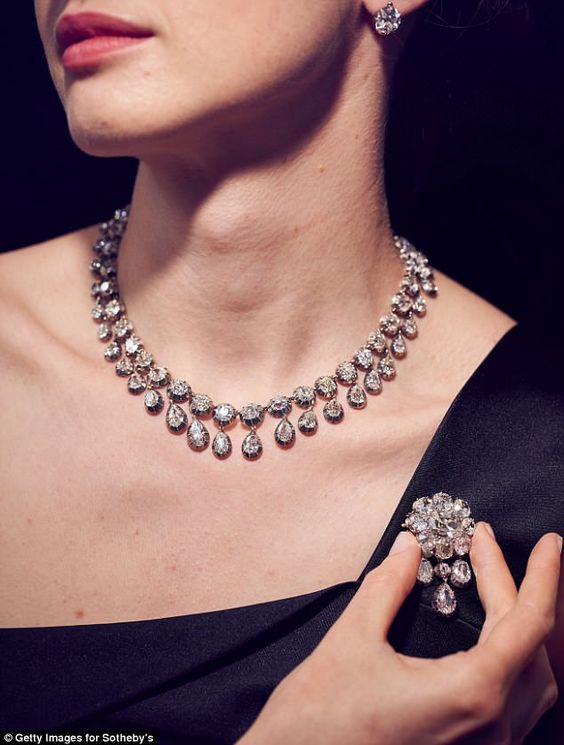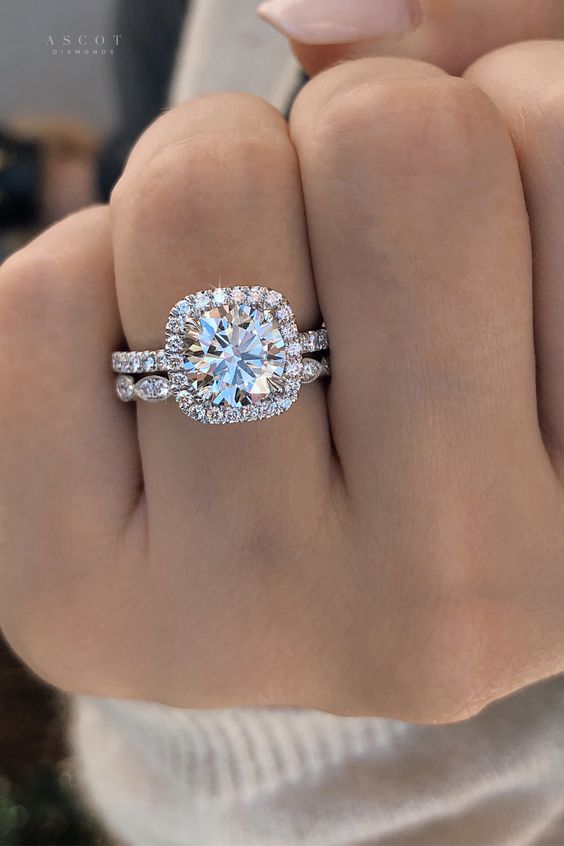As the name suggests, lab-grown diamonds are diamonds grown in laboratories, in chambers specially designed for the purpose.
But beyond that, what are lab-grown diamonds, and why do you want them?
What Are Lab-Grown Diamonds?
Lab-grown diamonds are called such because they have been synthesized in a laboratory. And growing a diamond is not a quick process. Crystallizing carbon atoms until they form a diamond can take from four to six weeks.
There are two chief methods by which a laboratory can “grow” diamonds: the high-pressure high-temperature method, and the chemical vapor deposition method.
The High-Pressure High-Temperature Method
Growing diamonds via the high-pressure high-temperature method started in the 1950s. As the name suggests, it works by using a combination of high pressure and high temperature.
The HPHT method simulates the extremely high temperature and pressure conditions that drive the natural formation of diamonds approximately a hundred miles beneath the Earth’s surface.
The HPHT Process
The following is the general procedure followed for creating lab grown diamonds via HPHT.
- Place a diamond “seed” and pure carbon in a precisely controlled pressure chamber.
- Apply pressure greater than 870,000 psi and a temperature of around 4,700 degrees Fahrenheit to the chamber.
- The carbon will melt, and the carbon atoms will start adhering to the diamond seed.
- The process will continue until all the carbons have crystallized on the seed, producing a mature, fully crystallized diamond.
To sum up, the HPHT method takes a small piece of diamond and uses high pressure and high temperature to grow it into a fully crystallized diamond.
Diamond growers also use HPHT for diamond color treatment.
HPHT can turn Type IIa diamonds with defective lattices (thus their perceptibly brown hue and lower-color grade) into practically colorless, high-color grade diamonds.
The Chemical Vapor Deposition Method
The CVD method also has its roots in the 1950s. However, at least three more decades passed before scientists used CVD to grow diamonds. And it took many decades more before the CVD method started producing gem-quality diamonds.
The CVD method produces large, square-shaped tabular diamonds. A single CVD run, moreover, can yield multiple diamonds. CVD also requires a lower temperature and pressure than HPHT.
The CVD Process
- Prepare the CVD diamond growing chamber; this is a low-pressure (less than 14.7 psi) vacuum chamber.
- Place a diamond seed plate at the bottom of the chamber. This diamond seed substrate may be a natural, an HPHT, or a CVD diamond.
- Heat the diamond slice. The temperature could be from 1,292 to 2,372 degrees Fahrenheit.
- Let a mixture of hydrocarbon gas (usually methane) and hydrogen into the CVD chamber.
- Use microwave (or laser or some other mechanism) to activate the gas mixture.
- As the activated gas mixture comes into contact with the heated diamond substrate at the bottom, the activated gas will break down, and carbon atoms will attach themselves to the carbon in the diamond seed.
- The process will continue until the diamond substrate becomes several layers thick. The longer the diamond is grown, the thicker the diamond will become.
The CVD diamond is then laser-cut into a cylinder. Then it may or may not undergo HPHT processing for color treatment.
Are Lab-Grown Diamonds Real Diamonds?
Dig up any old chemistry textbook, and it should tell you that diamonds are carbon atoms that have crystallized in an isometric structure. It should also tell you that, in a diamond, one carbon atom is covalently bonded tetrahedrally to four more carbon atoms.
Lab-grown diamonds have precisely the same structure. They also look the same as naturally occurring diamonds.
Lab-grown diamonds are chemically and physically identical to mined diamonds. So yes, they are real diamonds.
In fact, it is virtually impossible to tell lab-grown diamonds apart from natural diamonds, even upon careful scrutiny by the most experienced gemologists.
Why Choose Lab-Grown Diamonds?
Lab-grown diamonds and natural diamonds are identical, chemically and physically. On an engagement ring, a Type IIa colorless natural diamond looks precisely the same as a Type IIa colorless HPHT or CVD diamond.
But unlike natural diamonds, HPHT and CVD diamonds are better for the environment and your bank balance.
Growing Diamonds in the Laboratory Is More Sustainable and Eco-Friendly
Diamond mining activities produce a significant amount of greenhouse gases. The process itself releases harmful carbons into the air, causing air pollution and contributing to climate change.
Moreover, diamond mining activities require removing large amounts of soil, which could lead to harmful changes in the natural landscape. Diamond mining also leads to incursions in the natural habitat of wildlife.
On the other hand, HPHT and CVD diamonds are grown in controlled environments, reducing the emission of harmful carbons into the air.
Lab diamond growers can use renewable energy sources in diamond synthesis to reduce the use of fossil fuels. Using HPHT or CVD diamonds instead of natural diamonds in diamond seeding can further reduce lab-grown diamonds’ carbon footprint.
Diamond growers can also take specific measures at every stage of the production chain to reduce carbon emissions.
Lab-Grown Diamonds Can Be Used for All Kinds of Jewelry
Since lab-grown diamonds have identical physical and structural qualities to mined diamonds, they have practically the same uses when it comes to creating fine jewelry.
So, whether you need a diamond engagement ring, wedding ring, bracelet, pendant or some other type of jewelry, you can choose to use lab-grown diamonds and get similar results. The final outcome would be just as brilliant and beautiful.
Lab-Grown Diamonds Are Affordable
Naturally occurring diamonds have astronomical prices. In contrast, lab-grown diamonds cost only a fraction of what natural diamonds do.
Go for Sustainable, Ethical Diamonds
If you’re still conflicted about the issue of lab-grown diamonds vs natural diamonds, remember this. Lab-grown diamonds are real diamonds. There is no doubt about this. Examine it under a microscope, and it will look the same as a natural diamond.
Opting for a lab-grown diamond is not settling for anything less. Instead, choosing lab-grown diamonds means going for a sustainable option. And it doesn’t hurt that lab-grown diamonds are so much more affordable than natural diamonds.
See More As:
The post What Are Lab-Grown Diamonds (and Why You Want Them) appeared first on StylesGap.com.
from StylesGap.com https://ift.tt/2YwuYaM
via Regular Machine Embroidery Designs

.png)




No comments:
Post a Comment